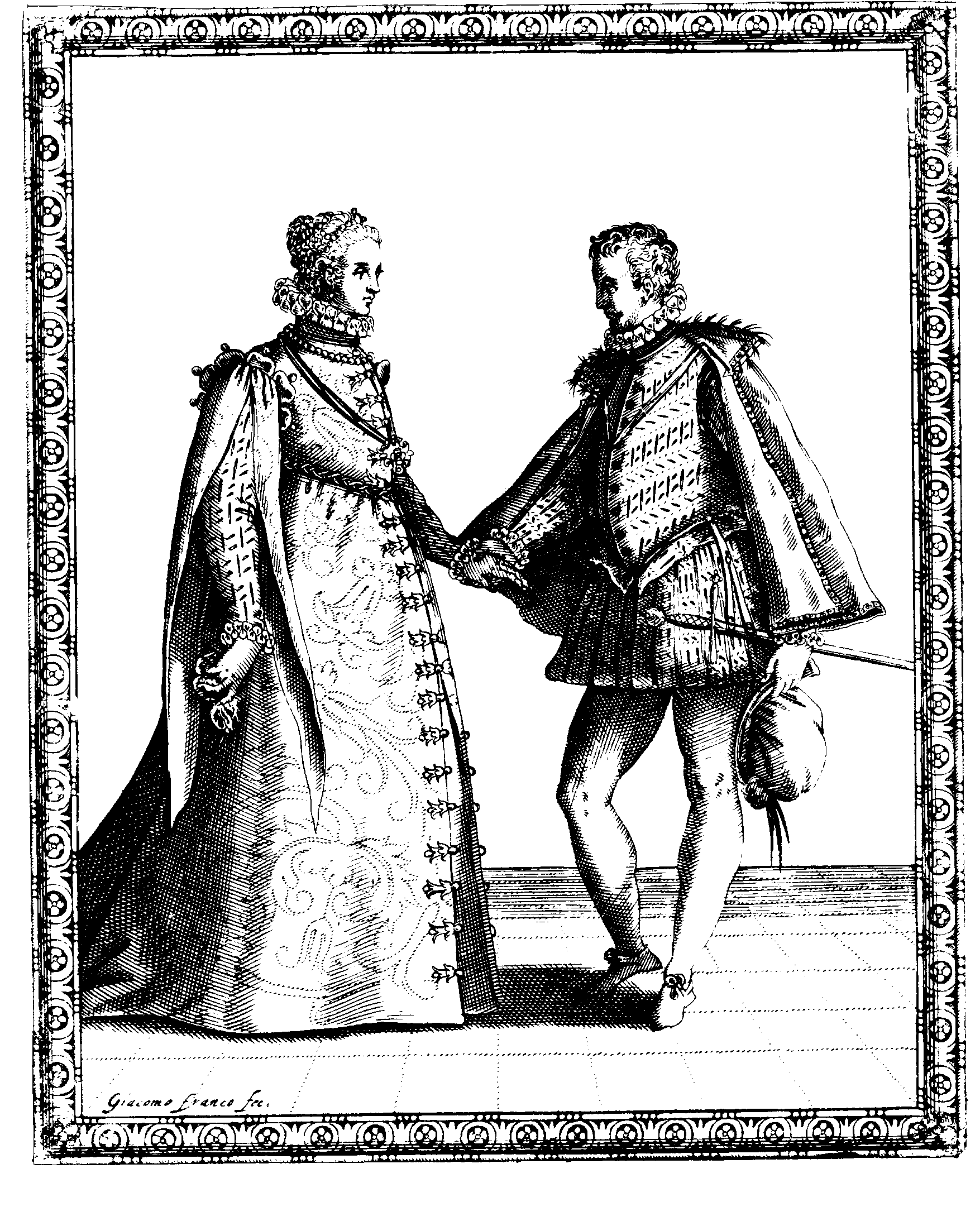|
All of the men
carry swords, except the ones in Negri's galliard section (Negri
says that the sword should be removed before the galliard). The
sword is in a scabbard, and hangs at the level of the man's left
hip, almost horizontal, parallel to the ground.
The left hand
is held low, alongside the hip, so as to keep the sword in place
(this hand also carry's the man's hat). The sword can also be
moved left and right by movements of the hand, or the pommel of
the sword can be lifted (lowering the point to the floor) by the
palm of the left hand.
The sword does
limit what you can do on the dance floor, and if you are
reconstructing dances of this period then you need to know what
those limitations are. For example, the man cannot turn rapidly
over his right shoulder while standing close to the lady or
another person, unless his left hand is free. Similarly, turns to
your left will need to be covered by a free hand, or done while
retreating away from the lady (e.g. Gracca Amorosa) or in a larger
backwards arc.
At various
stages during some of the dances, the man will use his left hand
for something other than holding his hat and sword. For example,
in Contrapasso Nuovo, the man passes at least one lady by the left
hand. In other places, the man takes his lady by both hands. This
places specific limitations on what the man can do at this point.
It was
considered impolite to attend a noble gathering without your
sword, in addition to which the consequences of being unable to
defend yourself at any point in time could be relatively severe.
It is interesting to note that at
least one dance writer of the period uses fencing terminology to
describe dance positions and/or footwork. It can therefore be
reasonably assumed that pretty much every gentleman during the
period was able to defend himself using a sword – those who did
not were occasionally reduced to statistics in the process of
natural selection.
|
 Both
Negri's and Caroso's books show the starting positions for each of
their dances. There are a couple of points to note in these
pictures:
Both
Negri's and Caroso's books show the starting positions for each of
their dances. There are a couple of points to note in these
pictures: